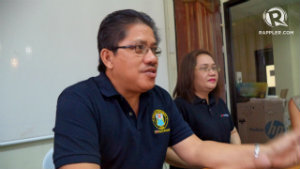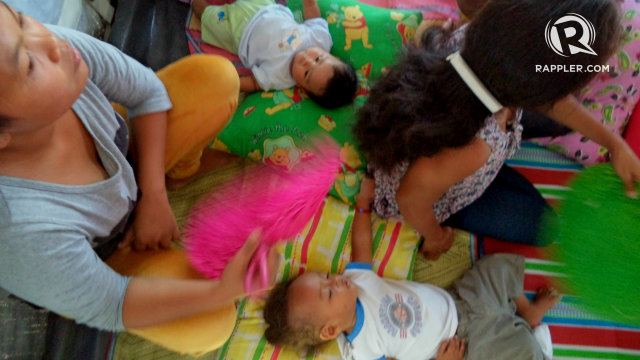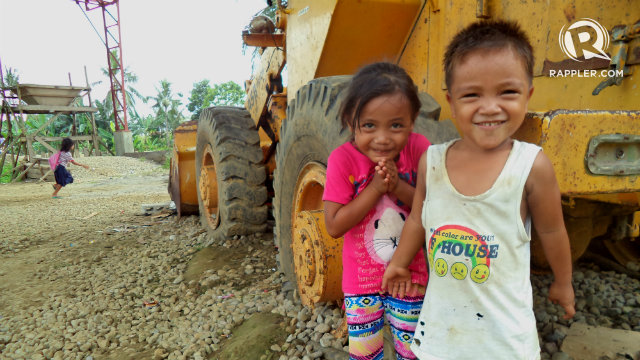SUMMARY
This is AI generated summarization, which may have errors. For context, always refer to the full article.
MANILA, Philippines — “More or less, there were over 40,000 people experiencing mild to severe depression in Tacloban City after Yolanda,” Dr Jaime Opinion, City Health Officer, told Rappler on Thursday, November 6.
This was based on an assessment done by Action Against Hunger (ACF), a humanitarian organization. Opinion added that mental health issues became apparent a month after the super typhoon ravaged Eastern Visayas.
Response came 1-3 months after Yolanda, as initiated by international non-governmental organizations. The local government then – together with the Department of Health (DOH), Unicef, the World Health Organization (WHO), and ACF – formed teams providing mental health services. This is part of their program “Tutok Gamutan” in which health workers conduct house visits, providing survivors with psychosocial support and other health services.
“We’re also training health workers down to the barangay level, including volunteers,” Opinion said. In Tacloban, he identified children as the most traumatized group. Parents of these children are also trained.
Aside from being trained on how to deal with survivors experiencing psychosocial issues, the health workers themselves were also debriefed and counseled. “They’re the first responders, but some had no time to grieve their own losses,” said Maria Lumen of the city nutrition office.
‘Vagrant psychotics’
The program also helps vagrant psychotics or those who are homeless and experiencing psychosis.
At present, the city health office caters to 20-25 of them. “We pick them up and bring them to hospitals. Most of them aren’t really from Tacloban, they’re delivered here in vans from other places,” Opinion said.
He said that their conditions were secondary results from the effects of Yolanda.
They are then brought to two hospitals capable of addressing their needs; one in Tacloban, and another in Palo.

He clarified that after Yolanda, there have been no reported cases of suicide in Tacloban. The city, however, continues to strengthen its mental health advocacy. (READ: Cases of mental health disorders to rise in 2015)
Big gap
Opinion admitted that his city did not really focus much on mental health prior to Yolanda. This, however, is the same for the rest of the country.
“Mental health is a big gap of the DOH,” said Opinion. “It’s not a priority, there’s a lack of trainings among medical professionals.” He added that it was only after Yolanda that efforts were intensified by both national and local governments.
Before Yolanda, Tacloban City only had two coordinators intensively trained on mental health. Now they have around 50 people trained, covering almost 40% of intervention needed by survivors.
Opinion, however, clarified that other health issues in Tacloban have been well addressed.
“After Yolanda, 90% of residents were injured, most were just minor injuries. We addressed those, as well as the most pressing cases of water-borne and food-born diseases,” Opinion said.
At present, Tacloban has a single case only of leptospirosis, and an “almost zero” rate of measles. “Three weeks after Yolanda, measles cases were massive, but we intensified our immunization campaign,” he added. “This prompted the government to also intensify its campaign nationwide.”
In 2015, the Tacloban City Health Office will have a P24 million budget, which is smaller than previous years, according to Opinion. Tacloban largely depends on local business, which diminished after Yolanda. “Hopefully though by next year, these local businesses will reopen, then perhaps our budget can increase.”
“As for now, we’re starting to recover in terms of accepting what happened to us. A year after, especially now during the anniversary, a lot of survivors are emotional in recalling what happened. We need to continue supporting them,” Opinion said. – Rappler.com
Stories on mental health after Yolanda:
- WHO: Mental health problems emerging in Yolanda-hit areas
- Yolanda a year after: Many still suffer grief, depression
- Post-Yolanda: Community support key to mental health
- Taking care of Marabut’s mental health
- Post-Yolanda: ‘Cases of mental disorders to rise until 2015’
Add a comment
How does this make you feel?


There are no comments yet. Add your comment to start the conversation.